Buried Pyramid of Menkaure Grandchildren Userkaf, Bunefer | Father Khafra Died 2504 BC Parents Khafra, Khamerernebty I | |
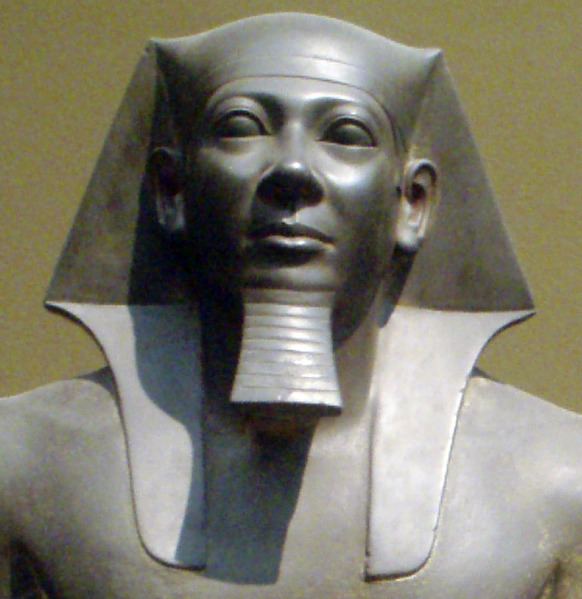 | ||
Reign 18 to 22 years, starting ca. 2530 BC (4th dynasty) Children Shepseskaf, Khentkaus I, Khuenre Similar | ||
Pyramid of menkaure giza egypt
Menkaure (also read as Menkaura), was an ancient Egyptian king (pharaoh) of the 4th dynasty during the Old Kingdom, who is well known under his Hellenized names Mykerinos (by Herodotus) and Menkheres (by Manetho). According to Manetho, he was the throne successor of king Bikheris, but according to archaeological evidences he rather was the successor of king Khafre. Menkaure became famous for his tomb, the Pyramid of Menkaure, at Giza and his beautiful statue triads, showing the king together with his wives Rekhetre and Khamerernebty.
Contents
- Pyramid of menkaure giza egypt
- One ancestor a day menkaure
- Family
- Reign
- Pyramid complex
- Valley Temple
- Mortuary Temple
- Sarcophagus
- Records from later periods
- Trivia
- References
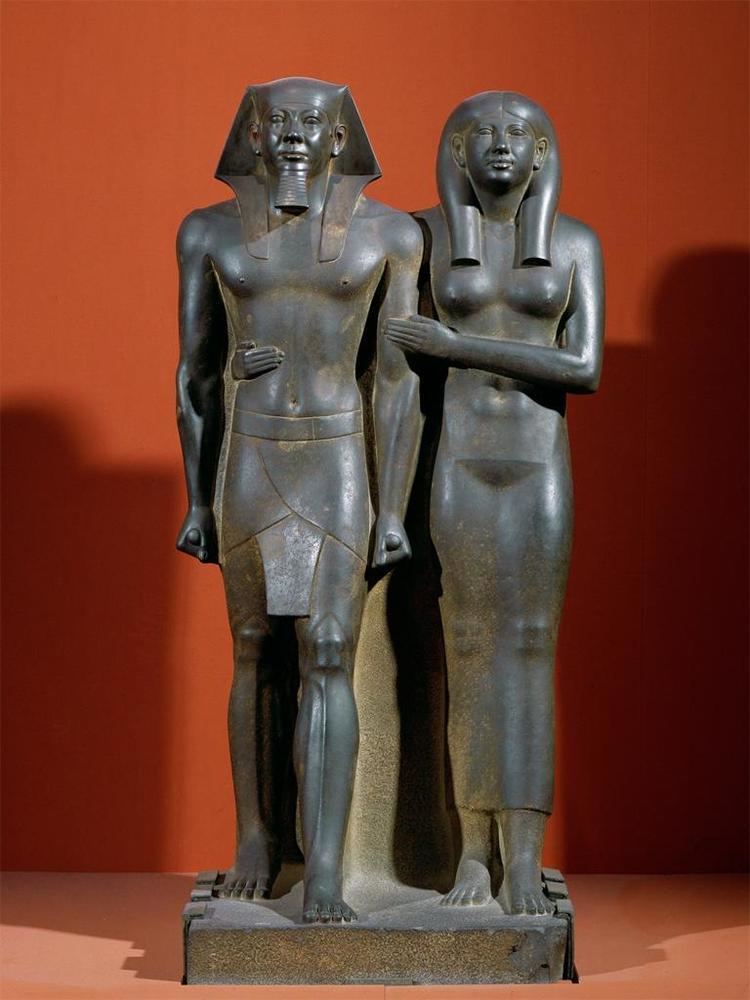
One ancestor a day menkaure
Family
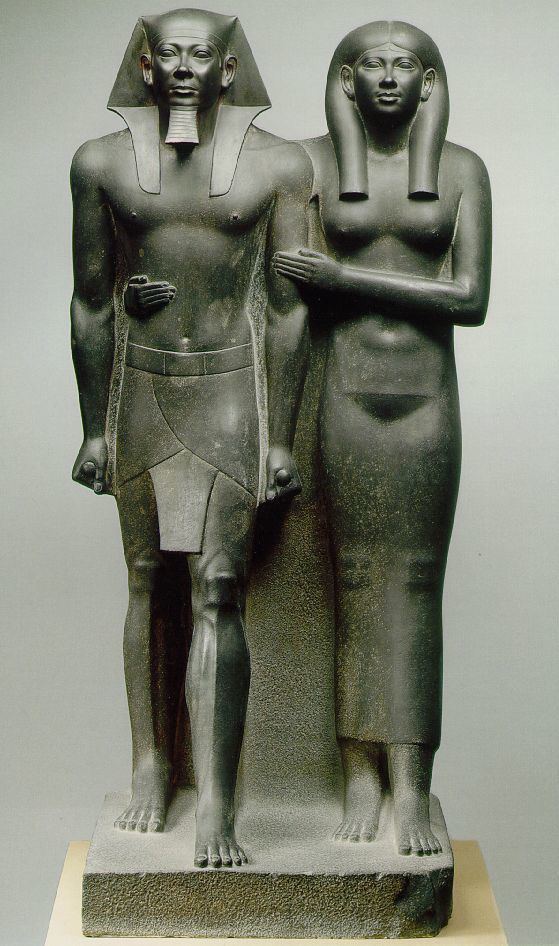
Menkaure was the son of Khafra and the grandson of Khufu. A flint knife found in the mortuary temple of Menkaure mentioned a king's mother Khamerernebty I, suggesting that Khafra and this queen were the parents of Menkaure. Menkaure is thought to have had at least two wives.
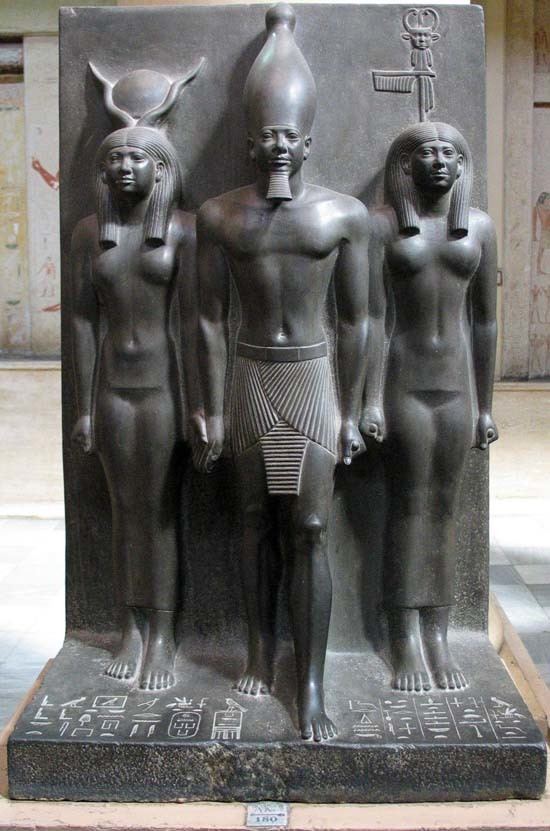
Not many children are attested for Menkaure:
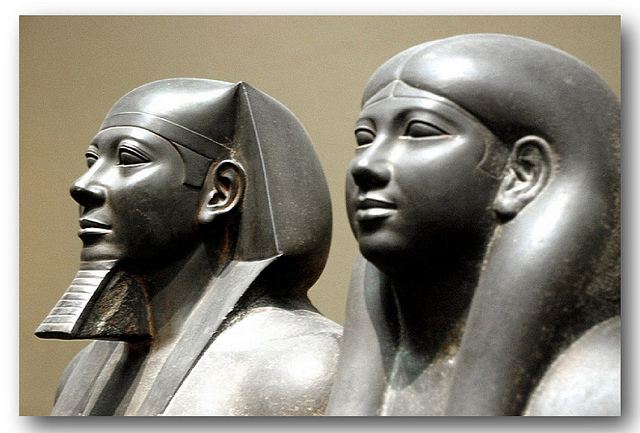
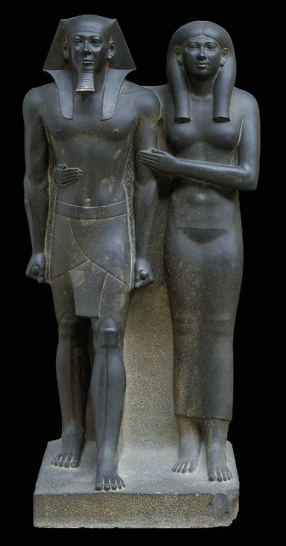
The royal court included several of Menkaure's half brothers. His brothers Nebemakhet, Duaenre, Nikaure and Iunmin served as vizier during the reign of their brother. His brother Sekhemkare may have been younger and became vizier after the death of Menkaure.
Reign
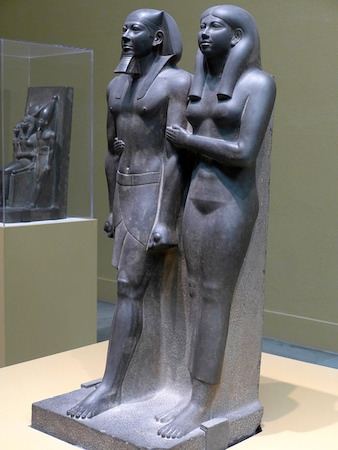
The length of Menkaure's reign is uncertain. The ancient historian Manetho credits him with a rulership of 63 years, but this is surely an exaggeration. The Turin Canon is damaged at the spot where it should present the full sum of years, but the remains allow a reconstruction of “..?.. + 8 years of rulership”. Egyptologists think that an 18-year rulership was meant to be written, which is generally accepted. A contemporary workmen´s graffito reports about the “year after the 11th cattle count”. If the cattle count was held every second year (as was tradition at least up to king Sneferu), Menkaure might have ruled for 22 years.
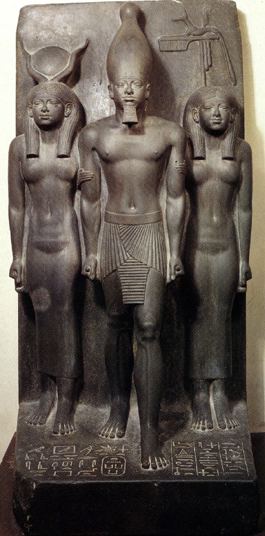
In 2013, a fragment of the sphinx of Menkaure was discovered at Tel Hazor at the entrance to the city palace.
Pyramid complex
Menkaure's pyramid at Giza was called Netjer-er-Menkaure which means "Menkaure is Divine". This pyramid is the smallest of the three pyramids at Giza. This pyramid measures 103.4 meters at the base and 65.5 meters in height. There are three subsidiary pyramids associated with Menkaure's pyramid. These pyramids are sometimes labeled G-IIIa (East subsidiary pyramid), G-IIIb (Middle subsidiary pyramid) and G-IIIc (West subsidiary pyramid). In the chapel associated with G-IIIa a statue of a Queen was found. It is possible that these pyramids were meant for the Queens of Khafra. It may be that Khamerernebti II was buried in one of the pyramids.
Valley Temple
The Valley temple was a mainly brick built structure which was enlarged in the 5th or 6th dynasty. From this temple come the famous statues of Menkaure with his Queen and Menkaure with several deities. A partial list includes:
Mortuary Temple
At this temple more statues and statue fragments were found. An interesting find is a fragment of a wand from Queen Khamerernebty I. The piece is now in the Boston Museum of Fine Arts. Khamerernebti is given the title King's Mother on the fragment.
Sarcophagus
In 1837, English army officer Richard William Howard Vyse, and engineer John Shae Perring began excavations within the pyramid of Menkaure. In the main burial chamber of the pyramid they found a large stone sarcophagus 8 feet 0 inches (244 cm) long, 3 feet 0 inches (91 cm) in width, and 2 feet 11 inches (89 cm) in height, made of basalt. The sarcophagus was uninscribed with hieroglyphs although it was decorated in the style of palace facade. Adjacent to the burial chamber were found wooden fragments of a coffin bearing the name of Menkaure and a partial skeleton wrapped in a coarse cloth. The sarcophagus was removed from the pyramid and was sent by ship to the British Museum in London, but the merchant ship Beatrice carrying it was lost after leaving port at Malta on October 13, 1838. The other materials were sent by a separate ship, and the materials now reside at the museum, with the remains of the wooden coffin case on display.
It is now thought that the coffin was a replacement made during the much later Saite period, nearly two millennia after the pharaoh's original interment. Radio carbon dating of the bone fragments that were found place them at an even later date, from the Coptic period in the first centuries AD.
Records from later periods
According to Herodotus, Menkaure was the son of Khufu (Greek Cheops), and alleviated the suffering his father's reign had caused the inhabitants of ancient Egypt. Herodotus adds that he suffered much misfortune: his only daughter, whose corpse was interred in a wooden bull (which Herodotus claims survived to his lifetime), died before him; additionally, the oracle at Buto predicted he would only rule six years, but through his shrewdness, Menkaure was able to rule a total of 12 years and foil the prophecy (Herodotus, Histories, 2.129-133).
Trivia
Menkaure was the subject of a poem by the nineteenth century English poet Matthew Arnold, entitled "Mycerinus".
